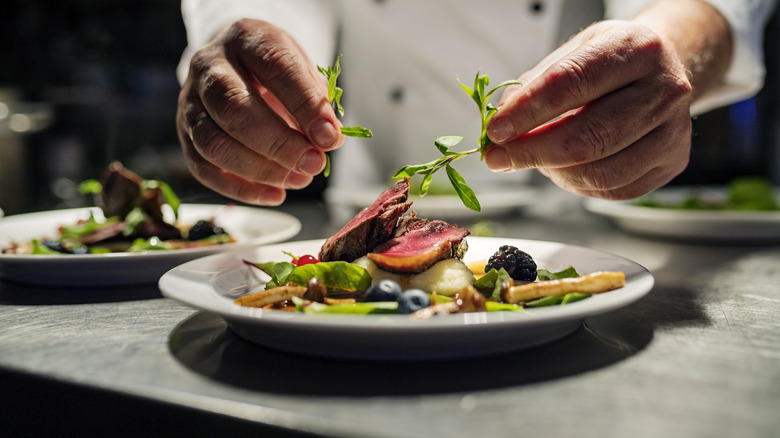How Restaurants Get You To Choose Certain Options With Decoy Pricing
It's hard to wrap your head around just how meticulously engineered many aspects of our lives have become – from the way social media apps are designed to imitate slot machines to how the architecture of supermarkets subliminally influences customers to spend more money. Restaurants are no different, and a lot of the action happens as soon as you sit down.
Restaurant menus have ancient origins, but they've undergone a serious transformation over the last several decades. One major shift was the invention of decoy pricing. Decoy pricing is a term coined by marketers back in the '80s that describes the tactic of guiding customers to a desired product by presenting it in conjunction with an inferior product. Wine menus are a great (and notorious) example of this.
Let's say we have a wine menu with only two items. One bottle of wine is listed for $15 while the second bottle is $35. Between these two options, most people will opt for the $15 bottle since it's affordable and likely tastes just as good if the restaurant is worth dining at. But the restaurant doesn't make as much profit off of the $15 bottle. They would prefer it if you bought the more expensive option. This is where decoy pricing comes in. A menu that uses decoy pricing will list a third option at $70 which means the $35 bottle no longer looks as outrageous. It's downright reasonable in comparison, effectively reducing customer resistance which translates into more sales.
How to see through decoy pricing
There are other ways to use decoy pricing than simply offering more expensive products. Another method is to offer something that's close in price but noticeably worse in quantity or quality. Let's say you go through a fast food drive-through where they offer three sizes of fries. The small is $2, the medium is $3.50, and the large is $4. The large fry is looking like a pretty good deal in comparison to the medium, and before you know it, you're chowing down on a large order of fries when you may otherwise have opted for a different option.
This is far from the only way restaurants trick you into spending more money, but it doesn't soothe the sting of realizing that your favorite restaurant is squeezing you for everything you've got. It's worth familiarizing yourself with this sales tactic so that you aren't getting taken advantage of, but it's worth noting that restaurants know that their customers are now more aware of decoy pricing. At this point, the whole situation has become so reflexively self-aware that it's difficult to keep track of what's going on. When even the font of restaurant menus is being used to influence you to spend more, there's not much you can do except approach all restaurants with slight skepticism.

